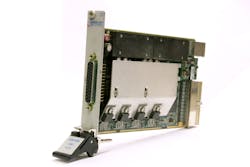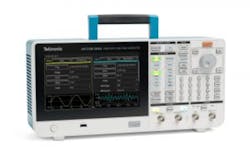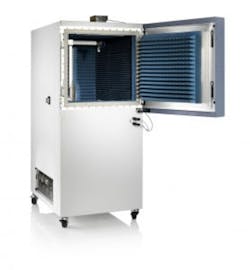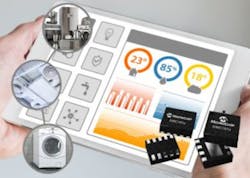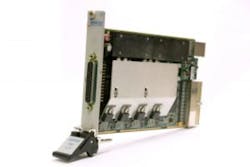December Tech Focus: Growth of wireless electronics spurs interest in RFICs
Radio frequency integrated circuits permit the integration of electronic circuits on a chip to distribute antenna system functionalities. RFICs have sparked the interest of researchers, as the cost savings of moving a wireless transceiver to a single technology have obvious benefits. With the burgeoning success of wireless in the marketplace, next-generation LTEs and 5G lead wireless into new frontiers.
Arbitrary function generator
The AFG31000 series arbitrary function generators feature a 9-inch capacitive touchscreen and new user interface to solve increasingly complex test cases for debugging, troubleshooting, characterizing and validating devices under test.Movable over-the-air test chamber for 5G antennas
and transceivers
The new ATS1000 antenna test chamber allows developers and production engineers to perform over-the-air (OTA) measurements for 5G on their antenna modules, transceivers, chipsets and wireless devices. Antenna and transceiver Low-power 1.8V Temperature Sensor Family
To help meet the functionality of Internet of Things and personal computing devices, this vendor has announced five new 1.8V temperature sensors. The EMC181x temperature sensor family also introduces system temperature rate-of-change reporting, a feature that provides advanced warning on how the10-kHz to 1,000-MHz amplifiers
A family of RF solid-state Class A power amplifiers is suitable for EMC testing,Synchronous converters
The highly integrated 5-A and 6-A LM73605/6 and 2.5-A and 3.5-A LM76002/3 step-down voltage converters feature an optimized pinout and thermal coefficient to simplify the process of achieving EMI compliance and higher reliability for rugged industrial and automotive power supplies, the vendor reports. The 5-A and 6-A LM73605/6 and 2.5-A and 3.5-A LM76002/3 DC/DC step-down buck converters simplify the process of achieving EMI compliance and high reliability for rugged industrial and automotive applications. The 3.5-V to 36-V LM73605/6 and 3.5-V to 60-V LM76002/3 buck regulators meet and exceed CISPR 25 Class 5 automotive EMC requirements. These regulators’ programmable output switching frequencies can be set either above the AM band, which eliminates AM-band interference and reduces output filter size and cost, or below the AM band to optimize efficiency. The small QFN package with wettable flanks delivers a low thermal coefficient of 7.1°C/W to improve reliability and enables post-solder optical inspection to simplify manufacturing. Optimized package pin placement allows flexibility in board design to improve heat sinking, which minimizes radiated and conducted emissions. Texas Instruments
TDK offers multilayer chip beads with high rated currents
This vendor’s MPZ0603-H Series multilayer chip beads for power lines in an IEC 0603 package (EIA 0201) feature twice the rated current and about half the DC resistance of the existing MPZ0603-C Series. Because of a newly developed4-channel PXI SMU
The new GX3104 4-channel PXI source measure unit (SMU) is a precision 3U PXI module that forces and senses both voltage and current over a range ofPXI SMU for semiconductor test
The PXIe-4163 high-density source-measure unit (SMU) provides more DC channel density than the vendor’s previous PXI SMUs for testing RF, MEMS, and mixed-signal and other analog semiconductor components. The vendor says chipmakers have rapidly adopted its Semiconductor Test System (STS) for its throughput, performance at cost, and footprint on the production floor. The new PXIe-4163 SMU further complements these capabilities. It delivers increased DC channel density for higher parallelism in multisite applications and lab-grade measurement quality in a production-ready form factor. Engineers can use the new PXIe-4163 SMU in either STS configurations or stand-alone PXI systems. Key product features include up to 24 channels in a single PXI Express slot; ±24 V per channel, up to 100mA current sensitivity, interactive configuration and debug software, and up to 408 high-precision SMU channels in a single PXI chassis. National Instruments
